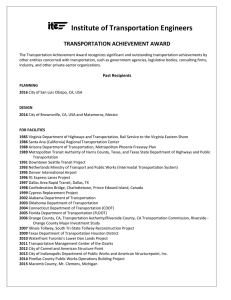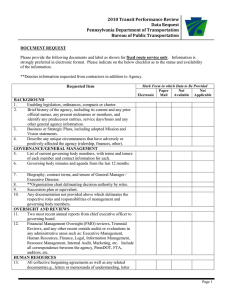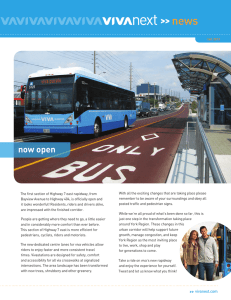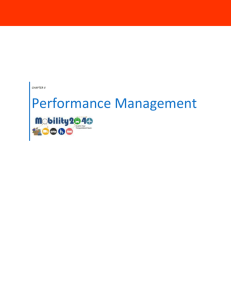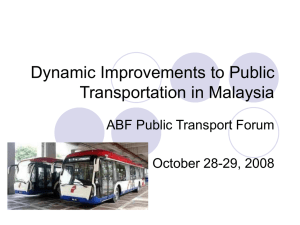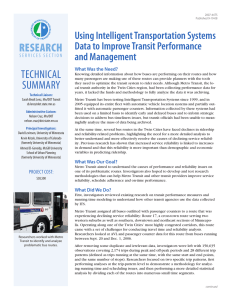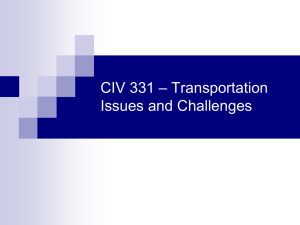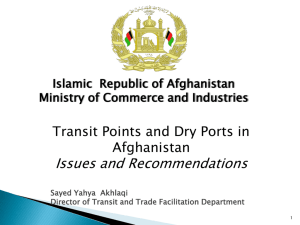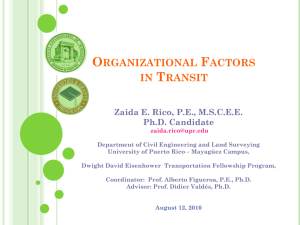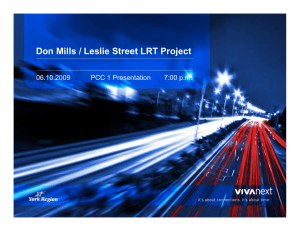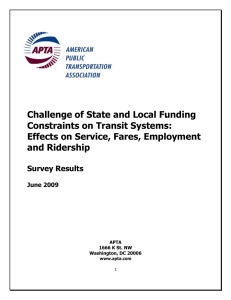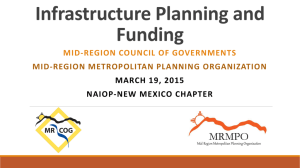Continuing
advertisement
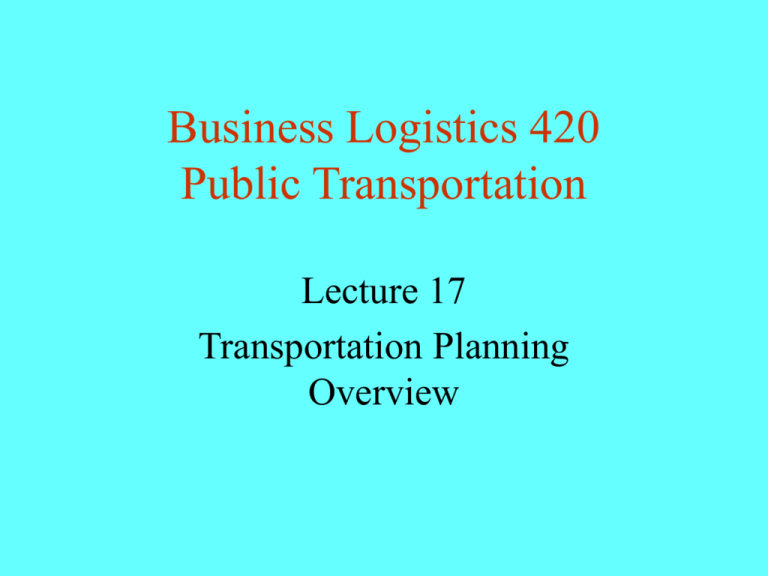
Business Logistics 420 Public Transportation Lecture 17 Transportation Planning Overview Lecture Objectives • Understand the scope of planning activities applicable to public transportation • Understand the legal background and institutional framework within which planning is practiced • Identify specific planning activities that are commonly related to public transit Transportation Planning • Theoretical definitions vs. institutionalized practice • Definition – planning is the orderly process of preparing a detailed scheme or program for accomplishment of an objective or goal worked out in advance. – Example – what is the best way to relieve congestion between State College and 7 Mountains that is safe, efficient, and environmentally sound? – Example – what is the best way to reduce the need for parking spaces on PSU’s central campus? – Example – what is the best way to provide mobility for Transportation Planning • Explicit within the previous definition are that planning: – Is an orderly process – Specific goals and objectives are known – The end product is defined • Implicit within the definition are: – The acceptance of change – Ability to deal with uncertainty and risk – The ability to accept errors The Theoretical Planning Process • Rarely practiced because – Hard to set goals • Goals conflict • Different groups and individuals have different goals – Assumes a change to the status quo – Typical approach does not include feedback mechanism to determine if plan accomplishes goal – Failure to include and account for uncertainty The Institutions of Planning • Metropolitan Planning Organization (MPO) – Locally controlled – Elected and appointed officials from region, also representatives of transit system and other organizations – Must approve long-range and short-range plans and specific projects in order to obtain federal funds – Transportation Improvement Program (TIP) US Transportation Planning Process • State and federal government funds most planning costs • Each metropolitan area has a planning staff devoted specifically to transportation planning • State DOTs have major input into planning decisions Transportation Planning in Practice • Long range plans – Typically 10-20 year projection – Multimodal, at least highways and transit, now also bike and pedestrian, also freight – Designed to evaluate major projects such as major new highway links, rail transit – Fairly general, not detailed design or location plans Transportation Planning in Practice • Typical Approach to Long Range Planning – Federal Government requires that each urban area have a long range plan as condition of receiving federal funds – “3C” Planning Process followed • Continuing, Comprehensive, Cooperative • Involves modeling of land use, demographic projections and transportation demand • Involves significant local government and citizen participation Transportation Planning in Practice • Short Range Plans – 3-5 year planning horizon – Usually for a single mode, e.g., highway, transit – Look at specific facilities (highway link, transit station), service design (routes and schedules) – Includes a plan plus capital and operating expense forecasts Transportation Planning in Practice • Operations Planning – Immediate needs – Service evaluations, new routes, new policies • Example, how CATA should modify its routes to serve the new Target store • Example, how to relieve overcrowding on Campus Loop Typical Short Range Transit Plan • Inventory of existing services – – – – – – Operations trends Fare structure Physical property Management structure Routes and service evaluation Ridership characteristics (usually an on-board survey Typical Short Range Transit Plan (Continued) • Analysis and Recommendations – – – – – – Data analysis Recommendations on transit operations Specification of equipment and facility requirements Fare structure recommendation Marketing plan Financial feasibility analysis including capital and operating expense estimates (3-5 years) – Management and organization recommendations – A five-year summary/business plan Four Major Planning Activities to be Covered in Subsequent Lectures • System design – System concepts – Route planning • Demand Forecasting • Cost Estimation • Performance Evaluation Study Questions • What is transportation planning? • Why is it so difficult to plan transportation facilities and services? • What are the three different planning horizons typically used in transportation planning and what kinds of activities fall into each category? • What are the typical elements of a short-range transit plan?










